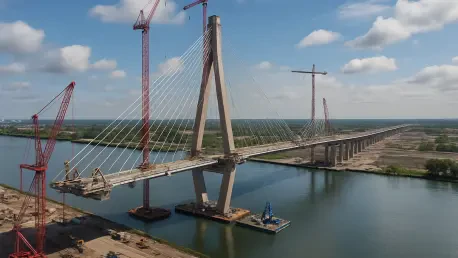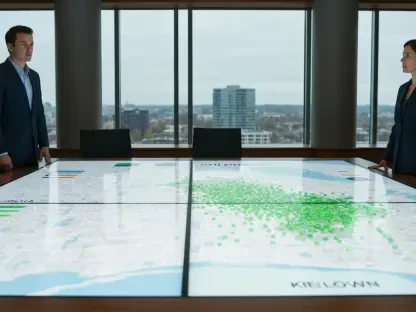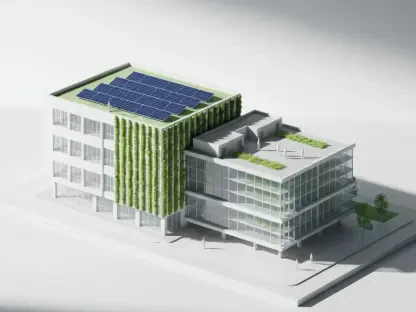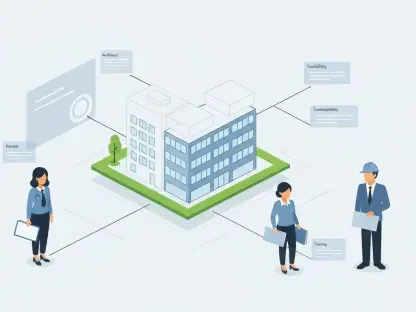We’re thrilled to sit down with Luca Calarailli, a seasoned expert in construction with a deep background in design and architecture. With a passion for leveraging technology to drive innovation in the industry, Luca brings a wealth of insight into complex infrastructure projects. Today, we’re diving into a conversation about the Gordie Howe International Bridge, a landmark cross-border project between the U.S. and Canada. We’ll explore its progress, the challenges it faces, and what this ambitious endeavor means for the future of international infrastructure.
How would you describe the current progress of the Gordie Howe International Bridge project, and what does the timeline look like right now?
I’m glad to share an update on this incredible project. The Gordie Howe International Bridge is very close to completion, with about 98% of the construction work done as of the latest reports. We’re looking at a potential finish this fall, though an exact opening date hasn’t been confirmed. The focus remains on ensuring safety and quality, which are non-negotiable. The bridge itself is nearly complete, with major structural milestones like the removal of tower cranes already achieved. However, there’s still critical work to wrap up, especially at the ports of entry and the Michigan Interchange.
What are some of the key challenges causing delays in the project’s timeline?
Delays have indeed been a concern. One major factor is the completion of the ports of entry on both the U.S. and Canadian sides. There have been missed deadlines for handing over the Canadian facility, and coordinating with border agencies adds complexity. Additionally, labor shortages have played a significant role. We’ve seen skilled workers drawn to other large projects in the region, like a major car battery manufacturing plant, which has slowed progress. Beyond that, unexpected issues, such as technical hiccups with infrastructure components, have also contributed to pushing the timeline.
With reports suggesting a possible delay until 2026, how likely do you think that scenario is, and what could drive such an extension?
The possibility of a 2026 opening, as mentioned in recent analyses, isn’t entirely off the table, but it’s not the base case either. The main trigger for such a delay would be further setbacks in handing over the customs facilities to the respective border agencies by the required deadlines. If those handovers don’t happen by mid-2025, we could see a domino effect on the opening. That said, the project team is actively working to mitigate risks and stay on track for an earlier completion, prioritizing critical tasks to avoid an extended delay.
Can you walk us through the process of handing over the ports of entry to border agencies and why this step takes so much time?
Absolutely. The handover process is crucial because the Canada Border Services Agency and U.S. Customs and Border Protection need time to set up their operations. Canada, for instance, requires possession of their facility nine months before the bridge opens, while the U.S. needs six months. This time is used for installing security systems, training staff, and ensuring everything meets strict international standards. It’s not just about building the structures; it’s about making sure they’re fully functional for border security and traffic flow from day one.
The removal of tower cranes from the bridge site seems like a big milestone. What does this signify for the project’s development?
It’s definitely a significant moment. The removal of the tower cranes indicates that the major structural work on the bridge—the longest cable-stayed span in North America—is essentially complete. This includes the towers, deck, and cabling systems. What’s left on the bridge itself is more about finishing touches, like paving, installing safety barriers, and setting up tolling technology. It’s a visual sign of how far we’ve come, though the focus now shifts to other components of the project.
There have been mentions of issues with the siphons system at the Michigan Interchange. Can you explain what’s going on there and how it’s being handled?
Sure, the siphons system at the Michigan Interchange, which is part of the drainage infrastructure, has encountered some technical challenges. While the specifics aren’t fully public, these issues often relate to ensuring proper water flow and integration with existing systems. The project team is addressing this by working on adjustments and testing to meet design standards. Fortunately, work at the interchange is nearly done, and I don’t anticipate this issue significantly impacting the overall timeline if managed efficiently.
What can you tell us about the advancements at the Michigan Interchange, and how does this piece fit into the broader project?
The Michigan Interchange is a vital part of the project, connecting the bridge to I-75 and local roads over a 1.8-mile stretch. Progress there is in the final stages, with tasks like ramp construction, line painting, and signage installation underway. There’s also ongoing work on pedestrian bridges and local road improvements. This interchange isn’t just about traffic flow; it’s about integrating the bridge into the regional network, ensuring accessibility and efficiency for both countries. It’s a complex piece that ties everything together.
Looking ahead, what is your forecast for the future of cross-border infrastructure projects like the Gordie Howe International Bridge?
I’m optimistic about the future of cross-border projects, though they’ll always come with unique challenges. The Gordie Howe Bridge sets a precedent for collaboration between nations on massive infrastructure endeavors, showing how shared goals can drive innovation in design and construction. I expect we’ll see more emphasis on technology, like advanced tolling systems and sustainable materials, in future projects. Additionally, lessons learned here—about labor management, agency coordination, and contingency planning—will shape how we approach similar initiatives, making them more efficient and resilient in the long run.









